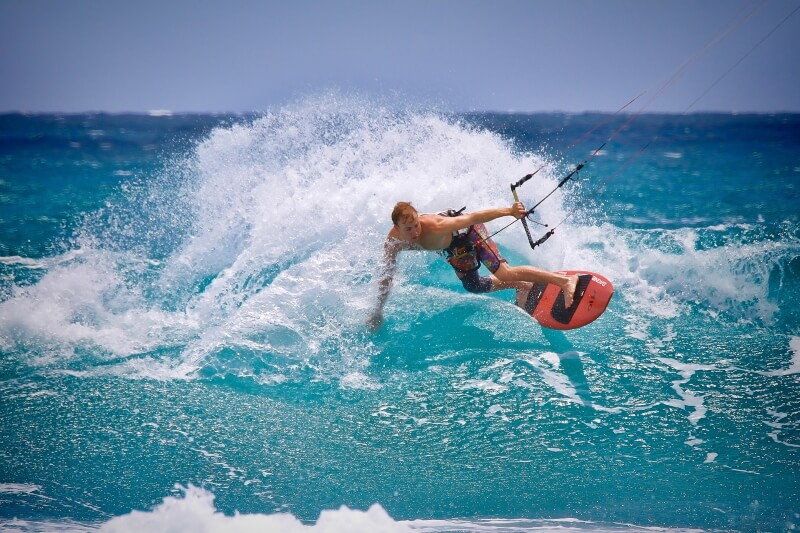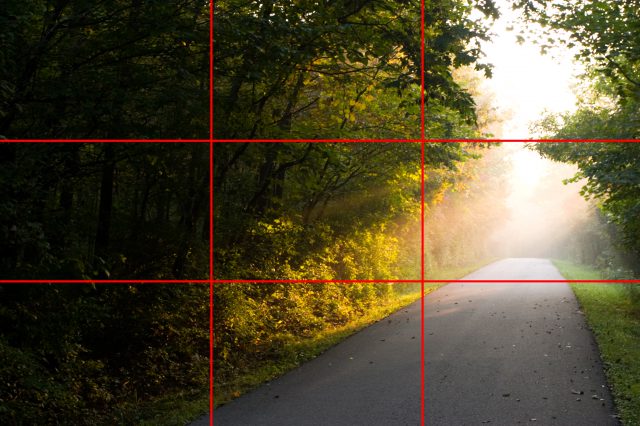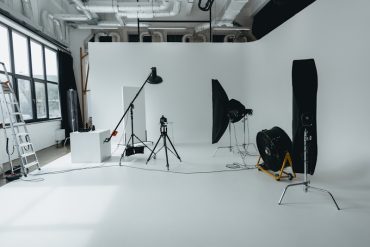This article will answer the question “what is the best telephoto lens for Nikon”, the list of these lenses come in three types. Nikon DX lenses are made for Nikon’s APS-C (DX) format cameras, Nikon FX lenses are for Nikon’s full-frame DSLRs, and there’s a third category of Nikkor Z lenses for Nikon’s mirrorless cameras
What is a telephoto lens?
A telephoto lens is a lens that appears to magnify distant objects. To do that, they need to have a focal length longer than that of a normal lens, or a lens that approximates the optical qualities of the human eye. A normal lens has a focal length of between 40mm and 58mm on a full-frame camera so any lens with a focal length longer than 60mm can be considered a telephoto lens. The longer the focal length, the more magnification there is.
The most common telephoto zoom lenses have a focal range of 70mm to 200mm. Any lens with a focal length longer than about 300mm can be considered a super-telephoto lens as well.

Photo by daniyal ghanavati from Pexels
Telephoto lens types
There are two lens types (as all lenses do!)
- A prime lens (fixed focal length)
A prime lens has one focal length. What this means is that such a lens has a set angle of view that can not be changed (unless you move). you can not make the image appear larger or smaller within the frame. The only way of enlarging your subject and making it fill more of the frame is by physically getting closer to it. In turn, the only way to fit more into the frame is to step back.
So, why you may choose a prime lens? The answer is because they typically have a wide aperture, prime lenses can go as wide as f/0.95. For this reason, they offer not just better light-gathering abilities, but also a shallow depth of field, which can help to render the background highlights with bokeh effect. Therefore, these are great for shooting portraits of family, friends, and weddings.
Prime lenses, normally, are significantly cheaper, smaller in size, and are lightweight than their zoom counterparts. A fast prime lens will allow you to shoot subjects in low light environments without introducing blur, thanks to a larger / wider aperture.
- Zoom Lens (Variable focal length)
A zoom lens has a variable focal length. By turning the zoom ring, you move optical elements inside the lens to achieve a different angle of view. This means that you can make objects appear larger by turning the zoom ring in one direction or fit more objects into the frame by turning it in the opposite direction.
Zoom lenses, on the other hand, are perfect for capturing wildlife and fast-moving sports where it’s important to quickly change your perspective by zooming instead of moving your feet. This makes getting the perfect composition a lot easier.
Telephoto’s Focal length
- Short-telephoto lenses: About 70mm to 100mm, or even 135mm. These are ideal for shooting portraits and candid shots (for example at weddings), where you are quite close to the subject but don’t want to intrude too much. They are compact and lightweight and can be hand-held for fast shooting. Short telephotos are very popular for portrait photography; they render proportions of the human face very well.
- Medium telephoto lenses: 135mm to 300mm. These lenses are popular with sports and action photographers who can get quite close to the action, for example standing on the sidelines. For this type of photography, the aperture is critical in minimizing blur, particularly when photographing fast-moving subjects.
- Super telephoto lenses: 300mm and above: they are a popular choice among professional wildlife and nature photographers, as well as sports photographers who can’t get very close to the action (e.g. motorsport photographers). The longest lenses have telescope-like magnification, making them great for astrophotography, although they can be extremely expensive. These are staples when it comes to wildlife, sports, and long-range bird
Main characteristics of a telephoto lens:
- Allow you to get closer to faraway subject
- It has a narrow angle-of-view: focus on your subject and keep unwanted background elements out of the frame.
- It has a Shallow depth-of-field
- The perspective compression of the telephoto lens makes elements look nearer to each other.

Photo by Janko Ferlic from Pexels
What is the Best Telephoto Lens for Nikon?
Here are our picks of the best telephoto lenses for Nikon, As you would expect, any list like this is bound by the author’s own preferences. If there were just one “best” telephoto for everyone, lens companies wouldn’t be making so many different options.
The list contains three main sections:
I- Nikon DX lenses (for Nikon’s APS-C format cameras)
1- Sigma 50-100mm f1.8 DC HSM Art
2. Nikon AF-P DX NIKKOR 70-300mm f4.5-5.6G ED VR
3. Nikon AF-S DX NIKKOR 18-300mm f/3.5-6.3G ED VR
II- Nikon FX lenses (for Nikon’s full-frame DSLRs)
4. Nikon AF-P 70-300mm f/4.5-5.6E ED VR
5. Sigma 70-200mm f2.8 DG OS HSM Sport
6. Tamron SP 70-200mm f/2.8 Di VC USD G2
7. Nikon AF-S NIKKOR 70-200mm f2.8E FL ED VR
8. Tamron 70-210mm f/4 Di VC USD
9. Nikon 120-300mm f/2.8E AF-S FL ED SR VR
10. Nikon AF-S NIKKOR 300mm f4E PF VR EF-S ED-IF
11. Tamron 100-400mm f/4.5-6.3 Di VC USD
12. Nikon AF-S 200-500mm f/5.6E ED VR
III- Nikkor Z lenses (for Nikon’s mirrorless cameras)
13- Nikon Z DX 50-250mm f/4.5-6.3 VR
14- NIKON NIKKOR Z 24-200mm f/4-6.3

Photo by Waldemar Brandt from Pexels
I- Nikon DX lenses (for Nikon’s APS-C format cameras)
If you’re dedicated to an APS-C SLR system and are looking for a short telephoto zoom to cover events and give you some freedom in framing portraits, the fixed f/1.8 design and excellent sharpness delivered by the Sigma 50-100mm are very appealing.
Pairing a useful range of telephoto focal lengths with an especially fast design, this Nikon F-mount Sigma 50-100mm f/1.8 DC HSM is an Art-series zoom mixing impressive versatility with advanced optics.
The bright f/1.8 constant maximum aperture offers consistent low-light performance throughout the zoom range and also affords greater control over focus placement for shallow depth of field and selective focus applications.
The optical design incorporates a series of low dispersion and high-refractive index elements, which help to achieve high clarity and sharpness by suppressing various aberrations, color fringing, and distortion.
A Super Multi-Layer Coating has been applied, too, which controls lens flare and ghosting for improved contrast and color accuracy. Balancing the optical merits, this 50-100mm also sports an advanced Hyper Sonic Motor, along with internal focusing and zoom design, to promote fast, quiet, and precise autofocus performance.
Additionally, a tripod collar is integrated into the lens’s design for greater stability when working atop a tripod or monopod.
Specs
- Focal Length 50 to 100mm (35mm Equivalent Focal Length: 75 to 150mm)
- Maximum Aperture f/1.8
- Minimum Aperture f/16
- Lens Mount Nikon F
- Format Compatibility APS-C
- The angle of View 7° to 16.2°
- Minimum Focus Distance 12′ / 95 cm
- Maximum Magnification 15x
- Optical Design 21 Elements in 15 Groups
- Diaphragm Blades 9, Rounded
- Focus Type Autofocus
- Image Stabilization None
- Tripod Collar Fixed and Rotating
- Filter Size 82 mm (Front)
- Dimensions (ø x L) 68 x 6.72″ / 93.5 x 170.7 mm
- Weight 28 lb / 1490 g
The AF-P DX NIKKOR 70-300mm f/4.5-6.3G ED VR from Nikon is a 105-450mm-equivalent lens featuring an updated focusing mechanism along with a compact form factor.
One extra-low dispersion element is used in the optical design to greatly reduce color fringing and chromatic aberrations throughout the zoom range to maintain image clarity.
A Super super-integrated coating has also been applied to minimize reflections and flare for greater contrast. Suiting both photo and video applications, the AF-P designation indicates the use of a pulse stepping motor that offers notably quiet, fast, and precise autofocus performance.
Additionally, Vibration Reduction image stabilization compensates for up to four stops of camera shake for sharper handheld shooting.
Specs
- Focal Length 70 to 300mm (35mm Equivalent Focal Length: 105 to 450mm)
- Maximum Aperture f/4.5 to 6.3
- Minimum Aperture f/32
- Lens Mount Nikon F
- Format Compatibility APS-C
- The angle of View 22° 50′ to 5° 20′
- Minimum Focus Distance 61′ / 1.1 m
- Maximum Magnification 22x
- Optical Design 14 Elements in 10 Groups
- Diaphragm Blades 7, Rounded
- Focus Type Autofocus
- Image Stabilization Yes
- Filter Size 58 mm (Front)
- Dimensions (ø x L) 83 x 4.92″ / 72 x 125 mm
- Weight 64 oz / 415 g
The AF-S DX NIKKOR 18-300mm f/3.5-6.3G ED VR from Nikon is an ideal single-lens solution for photographing in a wide variety of situations.
Designed for DX-format cameras, this 27-450mm equivalent zoom features an advanced optical design comprising both aspherical and extra-low dispersion glasses, which help to reduce aberrations and distortions throughout the zoom range for notable clarity and sharpness.
A Super super-integrated coating has also been applied to suppress flare and ghosting when working in backlit or harsh lighting conditions.
Benefitting the optics is a four-stop-effective VR image stabilization system, which minimizes the appearance of a camera shake to produce sharper handheld imagery.
Additionally, a Silent Wave Motor affords quick, quiet autofocus performance along with a full-time manual focus override.
Specs
- Focal Length 18 to 300mm
- Maximum Aperture f/3.5 to 6.3
- Minimum Aperture f/22
- Lens Mount Nikon F
- Format Compatibility APS-C
- The angle of View 76° to 5° 20′
- Minimum Focus Distance 57′ / 48 cm
- Maximum Magnification 32x
- Optical Design 16 Elements in 12 Groups
- Diaphragm Blades 7, Rounded
- Focus Type Autofocus
- Image Stabilization Yes
- Filter Size 67 mm (Front)
- Dimensions (ø x L) 09 x 3.9″ / 78.5 x 99 mm
- Weight 21 lb / 550 g

II- Nikon FX lenses (for Nikon’s full-frame DSLRs)
New-generation autofocus and aperture control superb optical stabilizer and image quality No focus distance scale Incompatible with a variety of older DSLRs
The AF-P NIKKOR 70-300mm f/4.5-5.6E ED VR from Nikon is a telephoto zoom covering a comfortable portrait-length to telephoto range.
One extra-low dispersion element is featured in the optical design, which aids in reducing chromatic aberrations for improved clarity and color fidelity.
A Super Integrated Coating, too, helps to achieve accurate colors by controlling flare and ghosting when working in bright and backlit conditions.
Noteworthy for this lens is the AF-P designation, which indicates the use of a pulse stepping motor that offers notably quiet, fast, and precise autofocus performance to benefit both stills and video applications.
Additionally, Vibration Reduction image stabilization compensates for up to 4.5 stops of camera shake for sharper handheld shooting.
Specs
- Focal Length 70 to 300mm
- Maximum Aperture f/4.5 to 5.6
- Minimum Aperture f/32 to 40
- Lens Mount Nikon F
- Format Compatibility Full-Frame
- The angle of View 34° 20′ to 8° 10′
- Minimum Focus Distance 94′ / 1.2 m
- Maximum Magnification 25x
- Optical Design 18 Elements in 14 Groups
- Diaphragm Blades 9, Rounded
- Focus Type Autofocus
- Image Stabilization Yes
- Filter Size 67 mm (Front)
- Dimensions (ø x L) 17 x 5.75″ / 80.5 x 146 mm
- Weight 5 lb / 680 g
The Sigma 70-200mm f2.8 DG OS HSM joins the ‘Sport’ line, and as this name implies, speed is very much the name of the game here. The lens has been designed with outstanding action capture in mind, and it hits this mark pretty perfectly.
Nikon F-mount Sigma 70-200mm f/2.8 DG OS HSM Sports Lens is a flexible telephoto zoom characterized by its bright and sophisticated design.
The fast constant f/2.8 maximum aperture excels in difficult lighting conditions and also offers increased control over the depth of field for isolating subjects.
Concerning the optical layout, an impressive 10 low-dispersion elements are used to greatly reduce chromatic aberrations and color fringing for improved clarity and color accuracy.
A Super Multi-Layer Coating is also featured and helps to suppress ghosting and flare when working in strong lighting conditions.
Specs
- Focal Length 70 to 200mm
- Maximum Aperture f/2.8
- Minimum Aperture f/22
- Lens Mount Nikon F
- Format Compatibility Full-Frame
- The angle of View 3° to 12.3°
- Minimum Focus Distance 94′ / 1.2 m
- Maximum Magnification 21x
- Optical Design 24 Elements in 22 Groups
- Diaphragm Blades 11, Rounded
- Focus Type Autofocus
- Image Stabilization Yes
- The tripod Collar is Fixed and Rotating
- Filter Size 82 mm (Front)
- Dimensions (ø x L) 71 x 7.99″ / 94.2 x 202.9 mm
- Weight 97 lb / 1.8 kg
Nikon F-mount SP 70-200mm f/2.8 Di VC USD G2 Lens from Tamron is characterized by its bright f/2.8 constant maximum aperture, as well as sophisticated optical and physical designs. In regard to optics, an improved layout contains one XLD element and five LD elements to suppress color fringing and chromatic aberrations for notable clarity and color accuracy, and both BBAR and eBAND coatings have been applied to reduce flare and ghosting.
Complementing the optical assets, this 70-200mm f/2.8 also features an advanced Vibration Compensation (VC) system that compensates for up to five stops of camera shake for sharper handheld shooting.
A ring-type Ultrasonic Silent Drive autofocus motor is also featured for responsive and accurate performance and also affords full-time manual focus override for fine-tuned control. Additionally, the lens is also dust- and moisture-resistant for working in trying environmental conditions, and it is paired with a rotating, removable tripod foot with an Arca-type compatible base for seamless shooting with a tripod or monopod.
Specs
- Focal Length 70 to 200mm
- Maximum Aperture f/2.8
- Minimum Aperture f/22
- Lens Mount Nikon F
- Format Compatibility Full-Frame
- The angle of View 34° 21′ to 12° 21′
- Minimum Focus Distance 12′ / 95 cm
- Maximum Magnification 16x
- Optical Design 23 Elements in 17 Groups
- Diaphragm Blades 9, Rounded
- Focus Type Autofocus
- Image Stabilization Yes
- Tripod Collar Removable and Rotating
- Filter Size 77 mm (Front)
- Dimensions (ø x L) 46 x 7.5″ / 87.88 x 190.5 mm
- Weight 28 lb / 1.49 kg
the AF-S NIKKOR 70-200mm f/2.8E FL ED VR from Nikon is a portrait to telephoto zoom offering a bright f/2.8 constant maximum aperture, intuitive handling controls, and sophisticated optical construction.
This revised layout now includes six extra-low dispersion elements, as well as one fluorite element and one high refractive index element, to reduce chromatic aberrations and color fringing for improved clarity and sharpness.
Nano Crystal and Super Integrated Coatings further benefit image quality by reducing lens flare for improved contrast and color accuracy and fluorine coatings on the front and rear elements protect against dust, moisture, and smudging.
The lens also features a series of robust physical and handling assets, including a four-stop-effective Vibration Reduction system to minimize the appearance of camera shake for sharper handheld shooting.
A Silent Wave Motor AF system also contributes to sharp imagery with quick, quiet, and smooth focusing performance that is suitable for both stills and video applications.
Specs
- Focal Length 70 to 200mm
- Maximum Aperture f/2.8
- Minimum Aperture f/22
- Lens Mount Nikon F
- Format Compatibility Full-Frame
- The angle of View 34° 20′ to 12° 20′
- Minimum Focus Distance 61′ / 1.1 m
- Maximum Magnification 21x
- Optical Design 22 Elements in 18 Groups
- Diaphragm Blades 9, Rounded
- Focus Type Autofocus
- Image Stabilization Yes
- Tripod Collar Removable and Rotating
- Filter Size 77 mm (Front)
- Dimensions (ø x L) 48 x 7.97″ / 88.5 x 202.5 mm
- Weight 15 lb / 1430 g
This Tamron lens is full-frame compatible but gives a slightly longer effective zoom range on both full-frame Nikons and DX-format DSLRs than comparable 70-200mm lenses, equivalent to 105-315mm in full-frame terms.
It is a versatile lens covering useful portrait to medium telephoto perspectives. Its constant f/4 maximum aperture maintains consistent brightness throughout the zoom range and offers increased control over the depth of field for achieving selective focus effects.
A minimum focusing distance of 3.1′ along with a 1:3.1 maximum magnification benefit working with close-up subjects and the rounded nine-blade diaphragm contributes to a pleasing bokeh quality.
Complementing the optical assets is a USD autofocus motor, which delivers notably quick, quiet, and precise focusing performance that suits both stills and video applications.
In addition, four-stop-effective Vibration Compensation helps to minimize the appearance of camera shake for sharper handheld shooting in difficult lighting conditions. Additionally, the lens is moisture-resistant and has a fluorine coating on the front element to enable its use in trying environmental conditions.
Specs
- Focal Length 70 to 210mm
- Maximum Aperture f/4
- Minimum Aperture f/32
- Lens Mount Nikon F
- Format Compatibility Full-Frame
- The angle of View 34° 21′ to 11° 46′
- Minimum Focus Distance 12′ / 95 cm
- Maximum Magnification 32x
- Optical Design 20 Elements in 14 Groups
- Diaphragm Blades 9, Rounded
- Focus Type Autofocus
- Image Stabilization Yes
- Tripod Collar Removable and Rotating (Optional)
- Filter Size 67 mm (Front)
- Dimensions (ø x L) 99 x 6.8″ / 76 x 172.7 mm
- Weight 87 lb / 850.5 g
If performance is paramount and the price is no object, Nikon’s stellar 120-300mm f/2.8E lens is in a league of its own. A very unusual focal range, it sits between the trusted 70-200mm and 300mm combo used by professional sports shooters, offering a fast in-between solution for shooting mid and long-range subjects.
It has absolutely no weaknesses and is outstandingly consistent in its performance, with remarkable sharpness across the frame, across the focal range, and across the apertures – which is what you’re paying the big bucks for.
It is an F-mount telephoto zoom characterized by an advanced optical design, quick focusing performance, and a bright f/2.8 constant maximum aperture.
Fluorite, short-wavelength refractive (SR), and extra-low dispersion (ED) glass are used throughout the optical layout to effectively suppress a variety of aberrations for improved clarity, sharpness, and color accuracy throughout the zoom range.
ARNEO and Nano Crystal Coats, as well as Super Integrated Coating, have been applied, too, to suppress flare, ghosting, and surface reflections for improved contrast and color fidelity.
It is also characterized by its Vibration Reduction image stabilization system that compensates for camera shake to enable sharper handheld shooting.
A Silent Wave Motor also benefits from producing sharp imagery and affords quick and quiet autofocus performance along with full-time manual focus override.
Additionally, a rotating tripod collar is featured to assist in working with a support system and this lens utilizes an electromagnetic diaphragm to ensure consistent exposure stability when shooting at fast continuous speeds.
Specs
- Focal Length 120 to 300mm
- Maximum Aperture f/2.8
- Minimum Aperture f/22
- Lens Mount Nikon F
- Format Compatibility Full-Frame
- The angle of View 20° 20′ to 8° 10′
- Minimum Focus Distance 56′ / 2 m
- Maximum Magnification 16x
- Optical Design 25 Elements in 19 Groups
- Diaphragm Blades 9, Rounded
- Focus Type Autofocus
- Image Stabilization Yes
- Tripod Collar Fixed and Rotating
- Filter Size 112 mm (Front)
- Dimensions (ø x L) 04 x 11.95″ / 128 x 303.5 mm
- Weight 15 lb / 3250 g
The AF-S NIKKOR 300mm f/4E PF ED VR from Nikon is a prime telephoto that features a unique Phase Fresnel element to reduce the size and weight compared to other 300mm lenses. This element, along with one extra-low dispersion glass element, also helps to greatly reduce chromatic aberrations and color fringing for improved clarity and color accuracy.
Individual elements also feature both Nano Crystal and Super Integrated Coatings to suppress flare and ghosting, as well as a protective fluorine coating to guard the optical system against dust and moisture.
The lens also features a Silent Wave Motor AF system that produces fast, near-silent focusing performance to suit both stills shooting and movie recording and which can be manually overridden by simply turning the focus ring.
Further contributing to photographing in fast-paced situations and difficult lighting, VR (Vibration Reduction) image stabilization compensates for the effects of camera shake for sharper handheld shooting.
Additionally, an electromagnetic aperture mechanism is integrated into the lens design to provide greater exposure control stability that is especially beneficial when working with faster continuous shooting rates.
Specs
- Focal Length 300mm
- Maximum Aperture f/4
- Minimum Aperture f/32
- Lens Mount Nikon F
- Format Compatibility Full-Frame
- The angle of View 8° 10′
- Minimum Focus Distance 59′ / 1.4 m
- Maximum Magnification 24x
- Optical Design 16 Elements in 10 Groups
- Diaphragm Blades 9, Rounded
- Focus Type Autofocus
- Image Stabilization Yes
- Tripod Collar Removable and Rotating (Optional)
- Filter Size 77 mm (Front)
- Dimensions (ø x L) 5 x 5.81″ / 89 x 147.5 mm
- Weight 63 oz / 755 g
A flexible lens for telephoto shooting, the Nikon F-mount 100-400mm f/4.5-6.3 Di VC USD from Tamron spans a useful focal length range along with a lightweight design for even greater versatility.
The lens’s optical design incorporates three low-dispersion elements to suppress color fringing and chromatic aberrations, while an eBAND coating has been applied to individual elements to reduce lens flare and ghosting for greater contrast and clarity.
Complementing the optical design is a high-speed Ultrasonic Silent Drive autofocus system, which benefits by a dual MPU for quick and responsive performance.
Vibration Compensation is also featured to minimize the appearance of camera shake for sharper handheld shooting.
Suiting this 100-400’s use outdoors, its magnesium alloy construction is also weather-sealed for working in harsh environmental conditions.
Specs
- Focal Length 100 to 400mm
- Maximum Aperture f/4.5 to 6.3
- Minimum Aperture f/32 to 45
- Lens Mount Nikon F
- Format Compatibility Full-Frame
- The angle of View 24° 24′ to 6° 12′
- Minimum Focus Distance 92′ / 1.5 m
- Maximum Magnification 28x
- Optical Design 17 Elements in 11 Groups
- Diaphragm Blades 9, Rounded
- Focus Type Autofocus
- Image Stabilization Yes
- Tripod Collar Removable and Rotating (Optional)
- Filter Size 67 mm (Front)
- Dimensions (ø x L) 39 x 7.74″ / 86.2 x 196.5 mm
- Weight 45 lb / 1115 g
Panning a long, versatile zoom range, the AF-S NIKKOR 200-500mm f/5.6E ED VR Lens from Nikon is a telephoto zoom characterized by a constant f/5.6 maximum aperture for consistent performance throughout the zoom range.
The optical design incorporates three extra-low dispersion glass elements to reduce chromatic aberrations and distortions for increased sharpness and color accuracy.
Also contributing to improved image quality, a Super super-integrated coating has been applied to lens elements to lessen flare and ghosting for improved contrast and clarity.
A Silent Wave Motor AF system produces a fast, near-silent focusing performance that suits both stills shooting and movie recording, which can be manually overridden by simply turning the manual focus ring.
Further contributing to photographing in fast-paced situations and difficult lighting, VR (Vibration Reduction) image stabilization compensates for the effects of camera shake by up to 4.5 shutter speed stops.
Additionally, an electromagnetic aperture mechanism is integrated into the lens design to provide greater exposure control stability which is especially beneficial when working with faster continuous shooting rates.
Specs
- Focal Length 200 to 500mm
- Maximum Aperture f/5.6
- Minimum Aperture f/32
- Lens Mount Nikon F
- Format Compatibility Full-Frame
- The angle of View 12° 20′ to 5°
- Minimum Focus Distance 22′ / 2.2 m
- Maximum Magnification 22x
- Optical Design 19 Elements in 12 Groups
- Diaphragm Blades 9, Rounded
- Focus Type Autofocus
- Image Stabilization Yes
- Tripod Collar Removable and Rotating
- Filter Size 95 mm (Front)
- Dimensions (ø x L) 25 x 10.53″ / 108 x 267.5 mm
- Weight 07 lb / 2.3 kg

Photo by APG Graphics from Pexels
III- Nikkor Z lenses (for Nikon’s mirrorless cameras)
A perfect match for the Z 50 mirrorless DX body
The Nikon NIKKOR Z DX 50-250mm f/4.5-6.3 VR is a 75-375mm-equivalent zoom designed for DX-format Z-mount mirrorless cameras.
Spanning a versatile range of telephoto focal lengths, this zoom is well-suited for working with distant subjects as well as portraiture applications. Its optical design incorporates one extra-low dispersion element, which greatly helps to reduce color fringing and chromatic aberrations for greater clarity and color rendering.
A Super Integrated Coating has also been applied to minimize ghosting and flare for increased contrast and color accuracy in bright and backlit conditions.
Its reach is also benefitted by Vibration Reduction image stabilization, which minimizes the appearance of camera shake by up to 5 stops for sharper handheld shooting.
A stepping motor provides quick, quiet, and precise autofocus performance along with a full-time manual focus override to suit both stills and video applications.
In addition, a programmable control ring can be set for intuitive adjustment over a variety of camera and exposure settings.
Specs
- Focal Length 50 to 250mm (35mm Equivalent Focal Length: 75 to 375mm)
- Maximum Aperture f/4.5 to 6.3
- Minimum Aperture f/16
- Lens Mount Nikon Z
- Format Compatibility APS-C
- The angle of View 31° 30′ to 6° 30′
- Minimum Focus Distance 64′ / 50 cm
- Maximum Magnification 23x
- Optical Design 16 Elements in 12 Groups
- Diaphragm Blades 7, Rounded
- Focus Type Autofocus
- Image Stabilization Yes
- Filter Size 62 mm (Front)
- Dimensions (ø x L) 91 x 4.33″ / 74 x 110 mm
- Weight 29 oz / 405 g
A one-lens solution for working in a wide variety of shooting situations, the NIKKOR Z 24-200mm f/4-6.3 VR from Nikon is an all-in-one 8.3x zoom covering wide-angle to telephoto focal lengths.
An advanced optical design, which uses a series of aspherical and ED elements, pairs with both ARNEO and Nano Crystal Coatings to produce sharp and clear image quality with high contrast and accurate color rendering to benefit working in various lighting conditions.
The impressive zoom reach also benefits from Vibration Reduction image stabilization, which minimizes the appearance of camera shake by up to 5 stops for sharper handheld shooting.
A stepping motor provides quick, quiet, and precise autofocus performance along with a full-time manual focus override to suit both stills and video applications.
In addition, a programmable control ring can be set for intuitive adjustment over a variety of camera and exposure settings.
Specs
- Focal Length 24 to 200mm
- Maximum Aperture f/4 to 6.3
- Minimum Aperture f/22 to 36
- Lens Mount Nikon Z
- Format Compatibility Full-Frame
- The angle of View 84° to 12° 20′
- Minimum Focus Distance 64′ / 50 cm
- Maximum Magnification 28x
- Optical Design 19 Elements in 15 Groups
- Diaphragm Blades 7, Rounded
- Focus Type Autofocus
- Image Stabilization Yes
- Filter Size 67 mm (Front)
- Dimensions (ø x L) 01 x 4.49″ / 76.5 x 114 mm
- Weight 25 lb / 570 g
Nikon’s professional mid-range zoom for Nikon Z cameras
A popular zoom among sports, event, and portrait photographers, the NIKKOR Z 70-200mm f/2.8 VR S from Nikon is an impressively versatile telephoto lens characterized by its bright f/2.8 design.
The fast maximum aperture suits working in available lighting conditions and also affords increased control over depth of field for isolating subjects with selective focus.
The optical design incorporates a series of ED, fluorite, and SR elements, which help to reduce color fringing and chromatic aberrations throughout the zoom range for improved clarity and color accuracy.
Additionally, ARNEO and Nano Crystal Coats, as well as a Super Integrated Coating, have been applied to suppress flare, ghosting, and surface reflections for improved contrast and color fidelity.
Complementing the optical design, a multi-focus system, which employs two stepping motors, helps to realize impressively fast, accurate, and quiet focus performance, along with full-time manual focus override, to suit both stills and video needs.
Vibration Reduction further complements making sharp images by reducing the appearance of camera shake when shooting handheld.
The lens also has a unique physical design, which incorporates a top OLED information panel that can be used to quickly confirm aperture and focus settings, and an assignable L.Fn button permits making exposure and settings adjustments via the lens.
Additionally, a programmable control ring can be set for intuitive adjustment over a variety of camera and exposure settings.
Specs
- Focal Length 70 to 200mm
- Maximum Aperture f/2.8
- Minimum Aperture f/22
- Lens Mount Nikon Z
- Format Compatibility Full-Frame
- The angle of View 34° 20′ to 12° 20′
- Minimum Focus Distance 64′ / 50 cm
- Maximum Magnification 2x
- Optical Design 21 Elements in 18 Groups
- Diaphragm Blades 9, Rounded
- Focus Type Autofocus
- Image Stabilization Yes
- Tripod Collar Removable and Rotating
- Filter Size 77 mm (Front)
- Dimensions (ø x L) 5 x 8.66″ / 89 x 220 mm
- Weight 99 lb / 1360 g

Photo by football wife from Pexels
Can’t afford a brand-new lens?
Sometimes, Lenses can be very expensive for many people. However, Keh is a great option to get a used one at a reasonable price. Read the full review here.
Thanks for reading, I hope you enjoyed the article, in case you have any questions just drop them below & I will be happy to answer you.
The featured image by Ehab Amin
If you enjoy the site, don’t forget to subscribe, we will only inform you when a new article is posted.


























An impressive and informative blog post on telephoto lens , got to know lot about types of lens available and their utility . Prime lens can be used for depth of field and zoom lens give u variable focal length , pretty detailed specs are given on which telephoto lens can be used for nikon camera . One can make informed decision with this blog post . thanks for sharing .
Thanks for your comment
wow, you are clearly a knowledgeable resource on this type of thing. I really feel like I just learned a ton about photography. What is your favorite lens type if you’re stunted by a limited budget? All of those seem to be on the professional aka expensive side of things…
Hi Rene
I am glad you find the article useful for you and thanks for the comment. My favorite lens is Nikon AF-P 70-300mm f/4.5-5.6E ED VR
Hello there! This is a really detailed post! To be honest, I do not know much about cameras. I am the type of person to take photos with my phone unfortunately. The picture that you have with the bird, I forget that there literally are lens that allow for such long distance photo capture with such high detail. I used to be under the impression that people had to physically be close to the object of desire in order to capture such an image. Might be kind of dangerous to do with the image of the bear or wolf. Thanks for this.
Thanks for your comment, glad you like the post